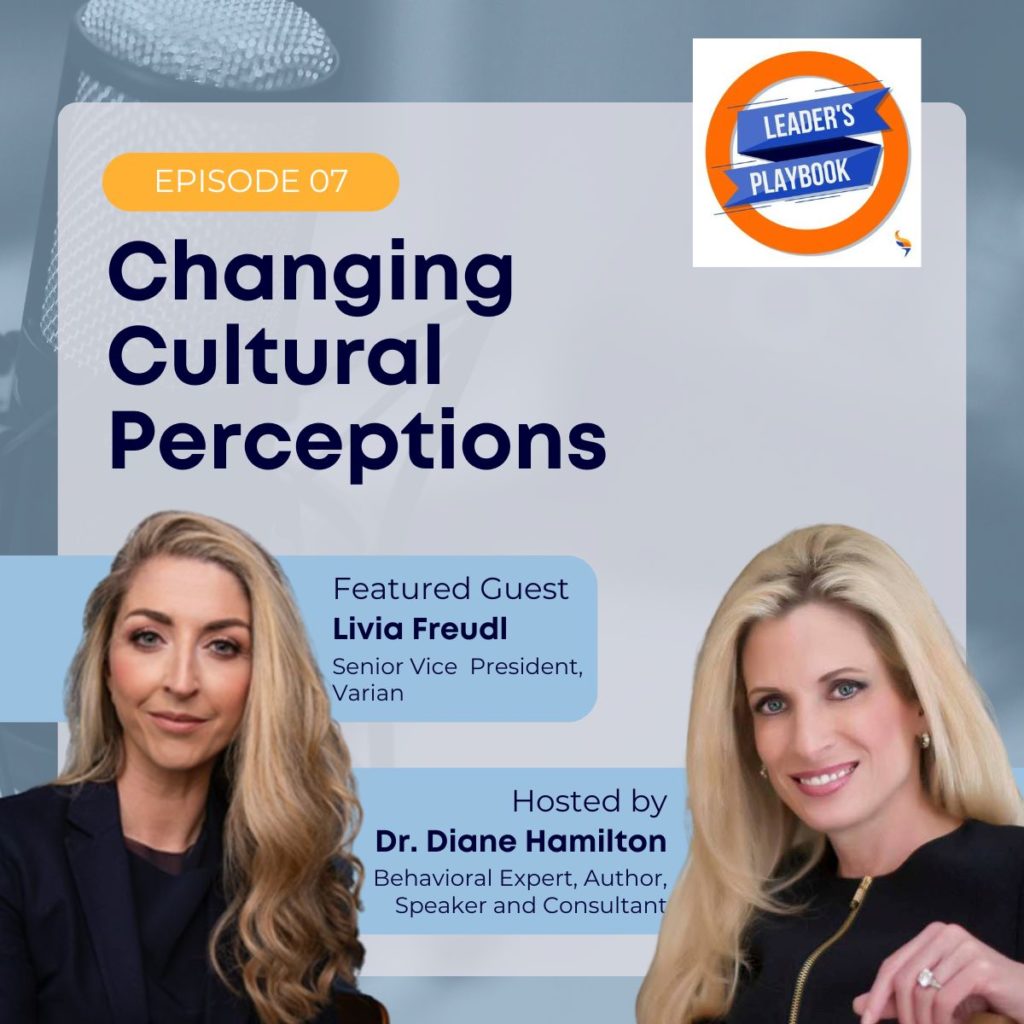Dr. Diane Hamilton's Blog
A Revolution in Hiring and Working with Eva Andres of Juniper Networks
Changing Cultural Perceptions with Livia Freudl of Varian

Our guest today is Varian’s Senior VP and Head of HR, Livia Freudl. In this latest episode, we discuss work at Varian is focused on shaping the future of oncology by building shorter paths between consultation and treatment. Livia shares her expansive global cultural experiences, how Varian promotes a broader cultural awareness by fostering curiosity, and how to keep employees engaged in today’s hybrid work model. Check out this and our other podcasts from Leader’s Playbook, which is part of Global Mentor Network.
Continue reading “Changing Cultural Perceptions with Livia Freudl of Varian”

How to Build C-Suite Connections: Five Steps to Creating a Show

I meet many people who want to sell their speaking and consulting services to businesses. The hard part, for many, is how to reach the decision-makers at the top. Many try writing books, blogging, speaking for free, holding webinars, creating video content, and a variety of other things to provide value. It all works, to some extent, but I have found the most valuable way for me to network is through interviewing on my show. The interesting thing is, I initially had and still have no intention of using it for anything other than learning about some very fascinating people. However, because my show has been so successful, people often ask me how I created it. Therefore, I would like to share some of the things needed to create a show.
Continue reading “How to Build C-Suite Connections: Five Steps to Creating a Show “
Cracking the Curiosity Code: The Key to Unlocking Human Potential – An interview with Dr. Diane Hamilton

The following is a guest blog post from by Ton Dobbe – Chief Inspiration Officer, Value Inspiration
Every week I interview entrepreneurs and experts from around the world to share their big idea about new forms of value creation and the potential we can unlock when technology augments the unique strengths of people to deliver remarkable impact.
Words to Capitalize in a Title
Bloggers and other writers may experience confusion as to which words should be capitalized in a title of an article. I sometimes capitalize all words so that I do not have to look up the rules. But it is good form to learn how to write correctly. The following rules apply to capitalizing titles:
- Always capitalize the first as last words of the title as well as verbs, adverbs, adjectives, nouns and pronouns.
- Consistently capitalize or do not capitalize conjunctions (examples: but, for, and) or prepositions (examples: words that show a relationship between the noun/pronounce with another word – example: from, over, around, about, before, behind) with five or more letters. Older rules required no capitalization and newer rules require capitalization if words contain five letters or more. Exception: If the word is the last word or the first word in a title, then it should be capitalized.
- Do not capitalize articles (example: a, an, the), prepositions (see examples above), conjunctions (see examples above) with four letters or fewer, and the particle “to” used with an infinitive (example: to do; to be). Exception: If the word is the last word or the first word in a title, then it should be capitalized.
Never have your title all in CAPITALIZED LETTERS because this is not only incorrect, it is considered yelling.
Related Articles
Anthropomorphisms: When Not to Use Them
There is a really big word that students should know, but may not. That word is anthropomorphic. Technically it means to give human form or attributes to something that is not human. It is popularly used in children’s books. However, doctoral students often have their dissertations rejected for including anthropomorphisms.
Here are some examples of what an anthropomorphism looks like:
- The study assumed that people would not be interested.
- The computer program thinks that the results are accurate.
Both of these sentences should not be used. The reason is that a person can “assume” but a study cannot. Animate nouns are things like a person, a researcher or a participant. Animate nouns can make an assumption. An inanimate noun, like a research study, cannot. Just like an animate noun, a researcher can “think”, but an inanimate noun, a computer, cannot.
To put it more simply, think of it this way:
- Person, Researcher, Participant = assume and think
- Study, Computer, Inanimate Object ≠ assume and think